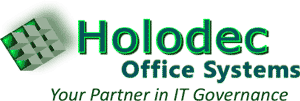-
How is the BPMN 2.0 business process diagram useful to our organization?

Process modeling is today's answer to successful business process management (BPM). It is used to convey an organization’s current (or “as-is”) processes to create a baseline for process improvements and to design future (or “to-be”) processes with design improvements built in.
Business and IT may seem to speak a different language at times. Business Process Modeling using BPMN 2.0 is used to show managers and developers, product testers, system designers, database experts and product owners all how a business process works or how it should work in the future. Since management and IT tend to communicate differently, this pictorial tool provides a bridge for communication between the two.
When the business analyst sits down with a subject matter expert to discover the components of the business process, the details are discovered for further analysis. A high level BPMN 2.0 diagram is drawn to show an overview that business managers can understand. A single high-level process can be expanded to drill down into the details of a sub process. Unlike a traditional flow-chart, these processes can show physical activities performed by a person, or mechanical activities performed by a machine. Information systems are included as individual business tasks used to perform an objective.
In the business process diagram the flow of the business process is revealed for all to see. We no longer are looking at a computing model - we are looking at what the business actually does and how it is done.
The BPMN 2.0 model shows interactions between entities - this can be people performing different roles or external entities such as cloud services and suppliers. A new level of understanding evolves when the audience can actually visualize how the basketball of work is passed back and forth between different players to arrive at its goal.
Subject matter experts viewing the process model can easily find areas in the process which may work different from what is desired. Either the process was not drawn correctly or the process itself has deviated from the design. The DRAWING can be corrected to reflect operations OR OPERATIONS can be changed to reflect the processes in the drawing.
Have a meeting to review a BPMN 2.0 Business Process Diagram. What happens? Flaws in the OPERATIONS process are discovered! PROCESS IMPROVEMENTS are suggested and implemented. Most importantly, the CUSTOMER is more satisfied with the efficiency improvements! STAKEHOLDERS' NEEDS are fulfilled more effectively!
